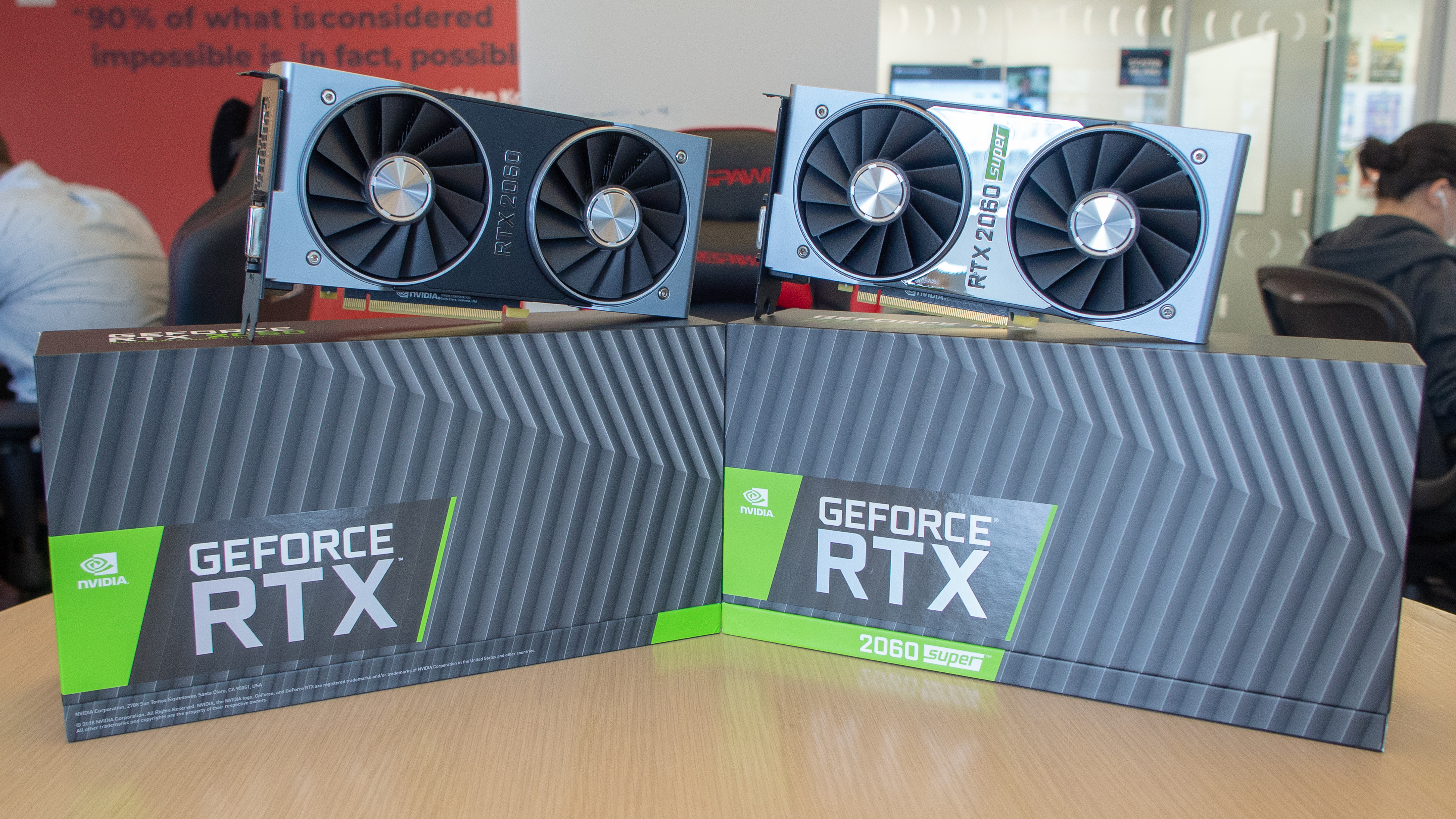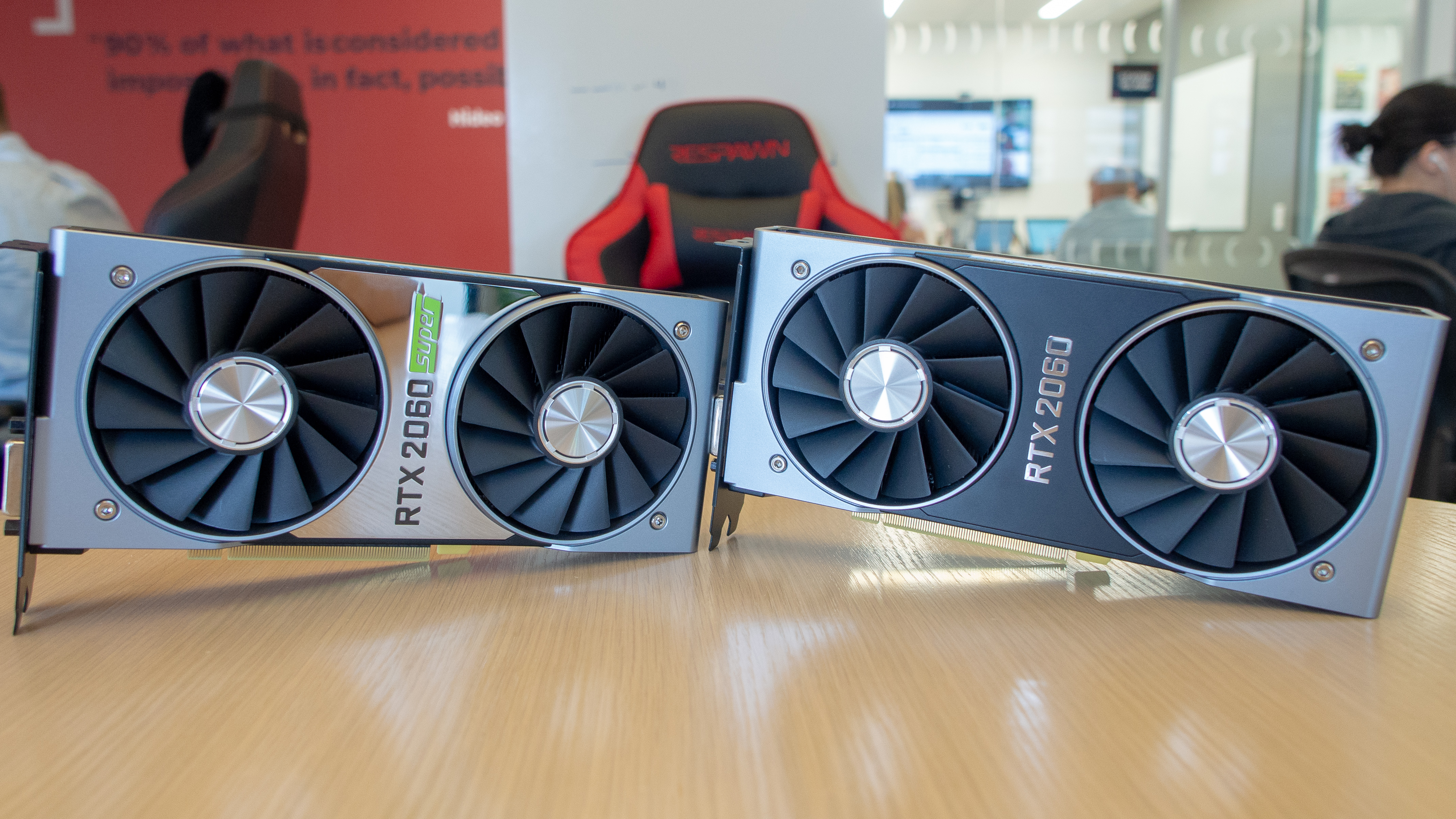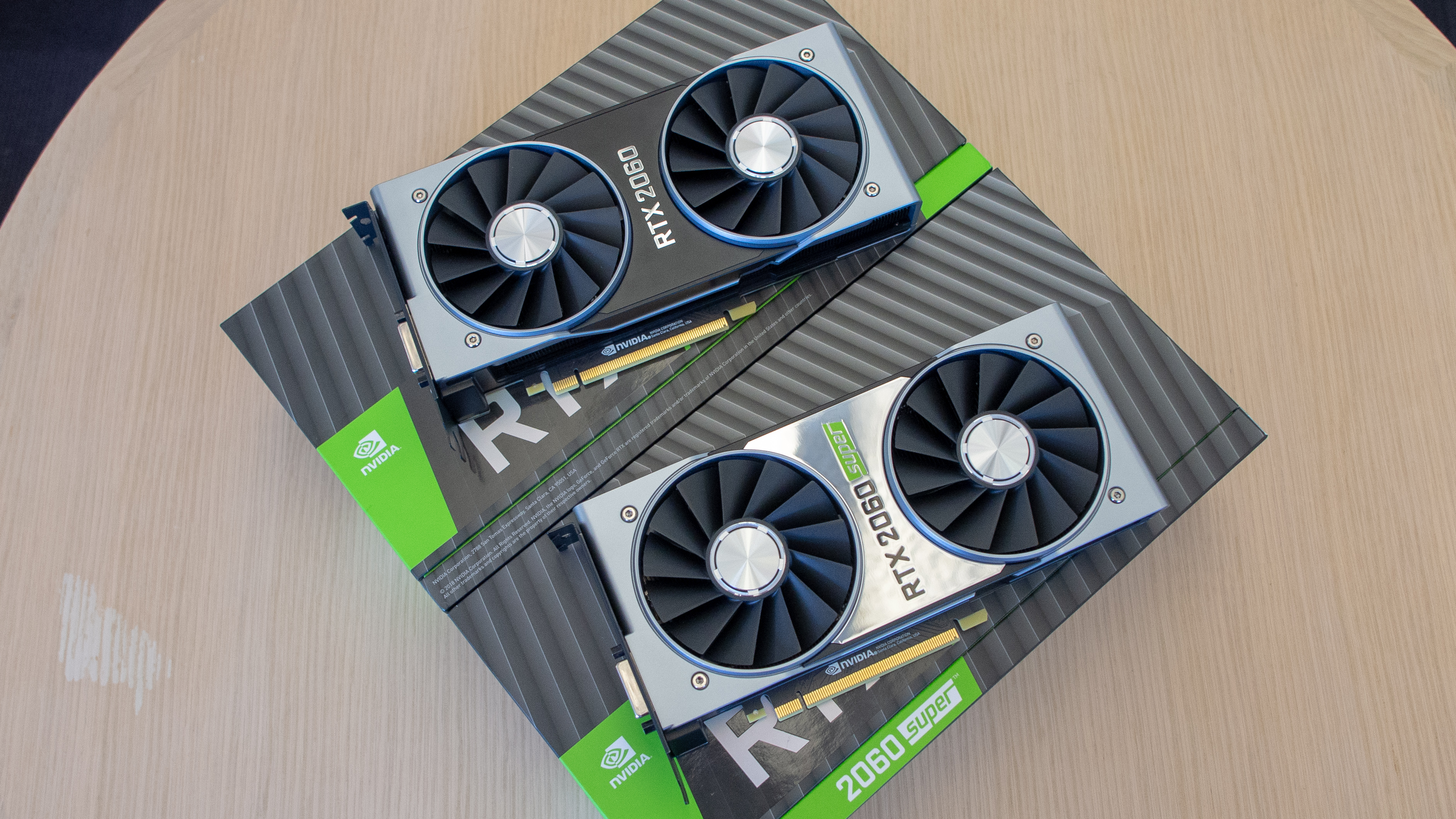Nvidia GeForce RTX 2060 Super vs RTX 2060: how much has changed?
A sizable upgrade for only a little more cash

The brand new Nvidia GeForce RTX Super graphics cards are finally here, starting with the Nvidia GeForce RTX 2060 Super and the RTX 2070 Super, launching on July 9. In so many words, these are supercharged versions of the same graphics cards available today.
But, are those super-powered upgrades worth the cost? If you have yet to get into the Nvidia Turing line of Nvidia graphics cards, then absolutely – the “Founders Edition” models of these cards cost exactly as much as the cards available before July 9. If you’re already on board with an RTX card, particularly the RTX 2060, then the proposition loses a bit of its luster.
However, this is the most affordable upgrade to your RTX 2060 that you’ll likely see for a long while, so consider that as we go over the specific differences between this new card and the one that it succeeds.

Price and specifications
Nvidia wants a cool $399 (about £314, AU$578) for the GeForce RTX 2060 Super Founders Edition that was just revealed, taking the place of the previous RTX 2060 Founders Edition price point. This change has pushed that previous Founders Edition card down to $349 (about £275, AU$505).
For the same price as before, the RTX 2060 Super packs the same Turing graphics processor built on the 12-nanometer (nm) process, but now with more video memory (VRAM), render output (ROP) units, texture units, ray tracing (RT) cores and different clock speeds.
To be exact, the RTX 2060 Super has 8GB of GDDR6 VRAM compared to the previous model’s 6GB. Likewise, the graphics card is house to 64 ROP units to the older model’s 48 units, 136 texture units to the original’s 120 and 34 RT cores to the latter’s 30.
Finally, the brand-new card has a base processor clock speed of 1,470MHz and a boosted speed of up to 1,650MHz. Last year’s card starts at a noticeably slower 1,365MHz and tops out at 1,680MHz – narrowly faster than this ‘Super’ card. We imagine this discrepancy is due to heat management concerns.
Sign up for breaking news, reviews, opinion, top tech deals, and more.

Performance
Now, we’ve yet to have the chance to fully test the RTX 2060 Super with our gamut of benchmarking tests. However, we have used it to play a few games with ray tracing, Deep Learning Super Sampling (DLSS) and the highest detail settings enabled at 1440p resolutions.
In that testing, we found the latest Metro Exodus to play at between 50 and 70 frames per second (fps) and Shadow of the Tomb Raider to hover between 60 and 70 fps. Flashing back to our RTX 2060 review of 2018, we generally saw much lower – but still playable – frame rates of between 40 and 45 frames per second at the same settings and resolution.
Granted, this could in part be due to optimization patches issued by these games’ developers since their release, but this is a marked improvement that can’t be entirely attributed to savvy optimization.

Conclusion: which should you buy?
If you’re just coming into the RTX line of Nvidia graphics cards, and you’re prepared to spend at least 350 bucks or quid on a part, it’s really a no-brainer to save or scrounge up another 50 and go for the RTX 2060 Super. This pricing is likely by design on Nvidia’s part.
The amount of additional performance and future-proofing here you’re getting for the cost of another PC game can’t be overstated. If you’re on a mighty tight budget but crave ray tracing, then go for the RTX 2060 that will likely be even cheaper with aftermarket options. Otherwise, save up another 50 bills and grab this new hotness.
- This card will soon be on the best Nvidia graphics cards list

Joe Osborne is the Senior Technology Editor at Insider Inc. His role is to leads the technology coverage team for the Business Insider Shopping team, facilitating expert reviews, comprehensive buying guides, snap deals news and more. Previously, Joe was TechRadar's US computing editor, leading reviews of everything from gaming PCs to internal components and accessories. In his spare time, Joe is a renowned Dungeons and Dragons dungeon master – and arguably the nicest man in tech.